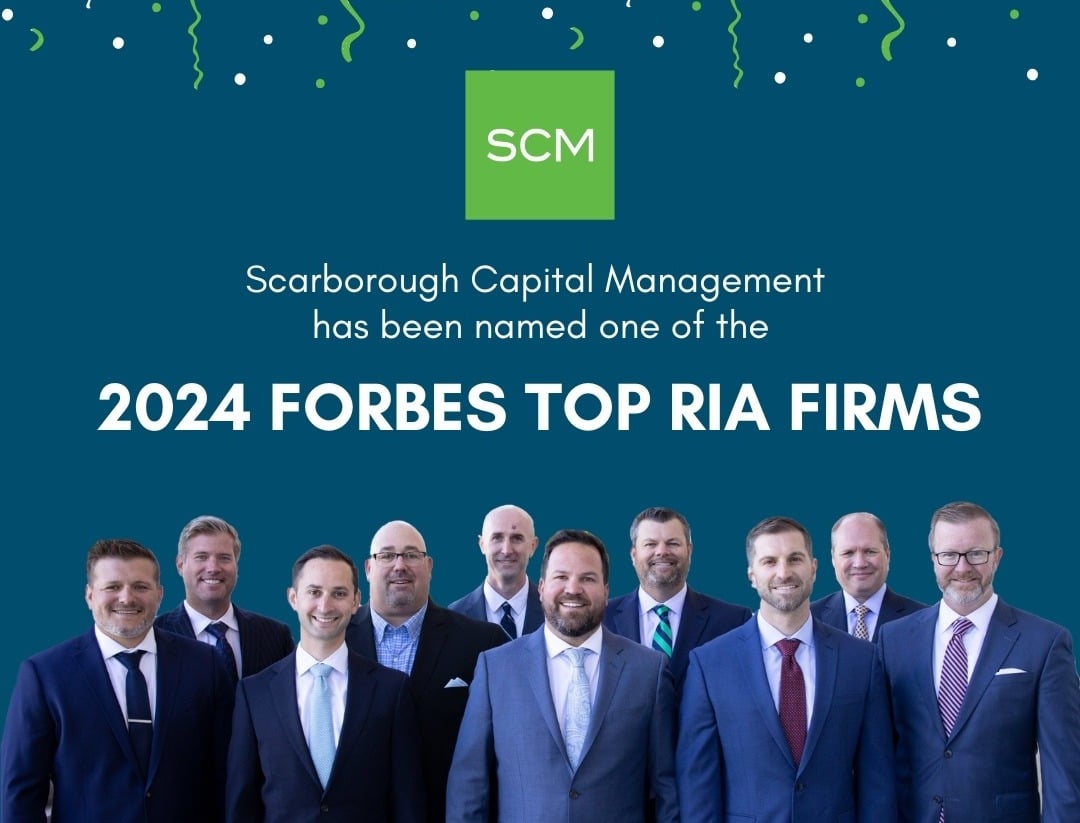

by Ian Arrowsmith
A Retirement Planning Checklist: 5 Steps to Prepare for Retirement
When can we retire? Will I outlive my money in retirement? What should we be doing now to retire in the next couple of years? We hear these questions a lot. And often times, the people asking these questions have no plan in place or idea of what retirement will actually cost.
A recent study shows that 43 percent of pre-retirees fear they’ll outlive their wealth. Medical bills, long-term costs, inflation, a down market – these are all unexpected risks that could put your nest egg in jeopardy right when you need it most.
But thankfully there are steps you can take to minimize these risks and quiet your fears as you plan for the next chapter in life.
For more than 30 years, Scarborough Capital Management has been helping busy people make smarter financial decisions. In our experience, we know that no matter what you plan to do in retirement, there are 5 steps you can take to prepare now. And they may not be as hard as you think.
Step 1: Plan Out Your Ideal Retirement Life
What do you dream of doing in retirement? Traveling once a month? Starting a business? Visiting with your grandkids every chance you get? You won’t know how much money you need to save until you have a clear picture of what your retirement will look like.
Everyone’s ideal retirement looks different, so we’ve created a list of questions to help you get started. Answer these questions honestly and then refer back to them as you move through the other items in this checklist.
- What are your retirement goals? What do you envision yourself doing in retirement?
- Do you plan on living in the same house? Will you be downsizing? Relocating?
- What does the cost of living look like in the area you’ll live in once you retire?
- If you’re married, will your spouse retire before or after you? How will this affect your cash flow?
- Are there any financial goals you hope to accomplish before retirement, such as paying off a mortgage or other debt?
Step 2: Create Your Retirement Budget
Your expenses in retirement may look a lot different than they do now. During your working years, a chunk of your income goes to transportation costs, business attire, lunch at the office and so on. These expenses are small, but they could easily save you a few hundred dollars a month.
Your budget will also change if you downsize or relocate. Downsizing can increase your cash flow and enable you to pay off any remaining debts you may have. Relocating could decrease or increase your spending in retirement depending on where you go. If you do plan to move in
retirement, research the cost of living in that area to get a realistic idea of how much you may spend. That can help you and your spouse determine the next question: When can we retire?
While you’re creating your budget, be sure to add a line item for unexpected healthcare costs. A healthy couple turning 65 today can expect to spend $383,000 on healthcare costs in retirement. Building these expenses into your budget now can help you plan for them later on.
Creating a budget for your future self can be complicated. Talking with a financial advisor can be a huge benefit in this process. Establishing a long-term relationship with a financial advisor you trust can help you stay on course and change your plans as your life changes.
Step 3: Consider Different Withdrawal Strategies
Many people over age 40 don’t know how much they can safely withdraw from their nest egg in retirement. This astonishingly high number proves why so many people reach retirement with insufficient funds.
There are common strategies and online calculators that can help plan, but remember, these don’t work for everyone. In fact, some financial experts claim that common rules of thumb, such as the 4 percent rule, are no longer relevant due to longer life expectancies and unique financial situations. Talking with a financial advisor may seem like an expensive cost at first, but think about the amount of money you can save by not making a mistake trying to do it all on your own.
Step 4: Create a Timeline for Your Income Streams
Generally, there are three streams of income in retirement: Your retirement plans, Social Security and your investments. You’ll begin pulling from these income streams at different times, so it can be helpful to create a timeline to help you visualize your cash flow.
Retirement Plans
You can start withdrawing from your retirement accounts as early as age 59-½. But here’s something you may not know: The IRS forces you to start taking withdrawals at age 73 if you haven’t already.
These forced withdrawals are called Required Minimum Distributions (RMDs) and they’re the government’s way of getting taxes back on your tax-deferred retirement plans, such as 401(k)s, 403(b)s, 457(b)s and traditional IRAs. (Note: Roth IRAs aren’t subject to RMDs because you pay taxes upfront.)
Social Security
You can start withdrawing from Social Security as early as age 62, but your monthly benefit will increase the longer you wait until age 70. Of course, many factors go into play when deciding the right age you should start claiming benefits. When working with a financial advisor, he or she should take into account your assets, age, health and goals to help you pinpoint the right withdrawal date.
Investments
Investment accounts have the most flexibility because you can pull from these accounts at any age. Use this income stream to fill in any gaps left by your retirement plans and Social Security.
For example, if your goal is to claim Social Security at age 70, but you’re retiring at age 65, your investment account could provide you a steady stream of income until Social Security kicks in.
Step 5: Set Your Retirement Date
The average American retires at age 63, according to the U.S. Census Bureau. But full retirement age is anywhere from age 65 to age 67 depending on your birth year, according to the Social Security Administration.
Choosing your retirement date is a highly personal decision. There are many factors to consider – your finances, your health, your job, etc. Choosing your retirement date and answering the question of when can we retire is often one of the hardest decisions you have to make.
On the bright side, going through the first four steps of this financial checklist should reveal when you could comfortably retire based on your assets and income needs in retirement. Use those numbers as a guide when choosing the right retirement date for you.
You may decide to work a few extra years to boost your assets so you can comfortably fund your retirement goals. Or you may find that you’re ahead of schedule and can move up your date.
Taking Your First Step
Planning for retirement can be confusing, overwhelming and exciting all at the same time. If you’d like to talk with a financial advisor about what you can do to get (or stay) on track financially, we’d love to help.
At Scarborough Capital Management, we pride ourselves on the relationships we share with our clients and welcome the opportunity to review your current financial situation and answer any questions you may have. Contact us today to get started.
Securities offered through Independent Financial Group, LLC (IFG), a registered broker-dealer. Member FINRA/SIPC. Advisory services offered through Scarborough Capital Management, a federally registered investment Adviser under the Investment Advisers Act of 1940. Registration as an investment adviser does not imply a certain level of skill or training. IFG and Scarborough Capital Management are unaffiliated entities.







